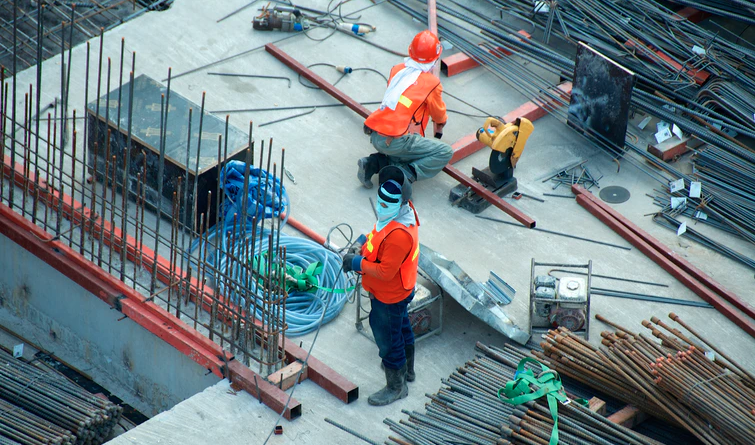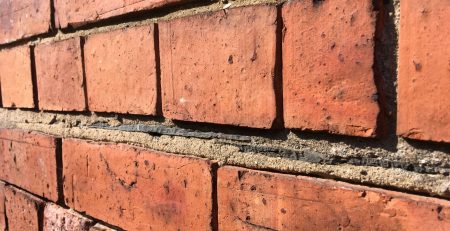How to Recycle Construction and Demolition Waste
If you have worked on a construction site before, then you know that waste production is unavoidable.
In the UK, you are legally bound to manage the waste your business produces appropriately. Additionally, you are required to ensure that you follow the waste management hierarchy. This process allows you to reduce, reuse, and recycle your trash before you dispose of it.
Following this hierarchy is vital because it assists the UK to reduce its environmental impact and minimise landfill demands are in place. This article by the National Construction Council will equip you with an analysis of suitable methods you should consider to assist you in safe and sustainable waste disposal or recycling of construction or demolition waste in different sites.
Plastics
If you are considering reuse of waste materials in construction, you will find many distinct types of plastic waste in any demolition waste.
Some included:
- PVC in gutters and windows
- HDPE in fittings and drainage pipes
- PP in crates and turps
- LDPE in plastic film binding and damp-proof pipes.
It is vital to find out from your waste contractor if they have clear-cut requirements for splitting up different kinds of plastic. Some conditions may include demands for tolerable levels of contamination.
Additionally, you should check whether you are eligible for any economic incentives such as slashed skip costs to make plastic separation beneficial. This also includes plastics used for packaging.
Ensure the skip used for plastics has clear labelling and that the labels have details of batch contents to avoid contamination.
Store plastic crates or pallets separately from other plastic waste in case your supplier has a bring-back system. This lets you return them to the producer for reuse. Hence, be sure to keep them apart from other waste plastic.
According to zero waste living blog enthusiast Antonia, recycling building materials is the excellent way of saving the cost of buying new. You should, therefore, consider the reuse of plastic piping if in good condition. Additionally, you should take stock of other salvaged plastics that you can use again on your next project.
Plasterboard
Plasterboard is a reusable material in construction. Its recycling operations include waste from demolition, rebuilds, production scrap such as unused plasterboard offcuts, and broken or unused board cuts.
As with all other waste, issue a skip for the collection of plasterboard.
Next, ensure that you cover the skip well to keep plasterboard dry. This is a crucial step because dry plasterboard is easier to reprocess, which ultimately makes the process much cheaper.
As you did with the wood skip, make sure that the skip used for plasterboard has got proper labelling and it’s easy to access. Use a simple sign to indicate what is in the skip.
A little contamination from certain materials like wallpaper, different wall coverings, nails and screws is tolerable. However, try to get rid of it as much as you can because if it is too much, then the cost of recycling the plasterboard will go up.
Plasterboard is not a dormant waste and should, therefore, be discarded separately from other kinds of waste like concrete or brick to prevent them from becoming contaminated.
Related: Tools That Are Making Demolition a Safer Process
Glass
If you’re looking into the recycling of construction waste, you will realise that a lot of the glass on building sites results from window leftovers. This class is called flat glass.
Consider whether your site has got any flat glass you can separate. If it doesn’t, consider the other kinds of glass waste that may be produced. These include containers and catering waste.
Will you be able to collect this waste easily? One way of doing this is designating trash cans at the exit of catering halls or canteens. You could also ensure that you target specific areas for catering that are far from your construction site.
It is essential to remove glass safely during demolition projects or while removing them from windows. The window frame and glass screens should be stored in separate areas.
Ensure that your workforce has the proper protective gear on while handling glass or reusing waste material.
Wood
 Another way of recycling building materials is to salvage wood from several demolitions, new building sites, or renovations. These may include:
Another way of recycling building materials is to salvage wood from several demolitions, new building sites, or renovations. These may include:
- Offcuts
- Railway sleepers
- Rafters
- Floorboards
- Fencing
- Posts
- Temporary works
- Frames
- Doors
- Poles
Wood can be reused as it is or sent for recycling where it can be cleaned, resized, and have nails removed.
According to experts Build Search, recycled wood is good for chipboard. Separate all the wood you have from other types of waste. If it is in good shape, you can reuse it as it is. One of the ways that you can separate the wood from other types of waste on your site is to allocate a dry storage area for storing it. As with any different kind of waste, wood waste will require a well-labelled skip that is easily accessible. You can label the skips in simple ways that show the designation of the trash.
Skips for timber waste should have proper labels with straightforward signs like timber skip. They should be accessible too.
Have a skip to separate wood waste you can not re-use. Additionally, you should find the source of the different wood waste and the amounts you are producing. Consider recycling waste materials on-site and identify waste you can return to the supplier (it is advisable to reuse or return blue CHEP pallets).
It is not a good idea to mix treated wood with one untreated. Chemicals and preservatives in treated wood can make waste hazardous.
Bricks and tiles
Luckily, you can recycle bricks and tiles on building sites. Buy them from specialist recycling firms. To save on purchase and landfill costs, it is advisable to accumulate and reuse bricks and tiles that you find on any construction site.
- “Ensure that bricks and tiles are appropriately separated from other waste that you produce on site,” comment US dumpster & junk removal professionals Bin The Dump That, “Allocate an area for users to collect and store any recycled bricks and tiles” they add.
- After that, allocate a skip for collection of additional waste from mortar and cement and assign labels on all skips that will detail what they contain and what shouldn’t be in them.
- You can collect bricks and tiles that are not reusable in your current project for different sites, or you can donate them to organisations that may find them useful.
- Also, additional tile and brick waste can be forwarded for recycling into aggregate.
Read also: Become A Fully-Fledged Builder With A Bricklaying Apprenticeship
Packaging
There is a wide range of benefits for packaging waste as it makes up almost 50% of the waste in construction sites. Regular construction sites in the UK produce up to 5.27 tonnes of packaging waste every week. Most manufacturers provide a bring-back system or recycling program for packaging waste.
Separating it on the site depends on how it will be recycled. Communicate with your waste management company and ask for their help on how to separate it and accumulate it.
If you are gathering it in a single skip, advise your workforce to manage the space by flattening and compressing packaging waste.
Concrete, asphalt, soils, and stones
Immovable items like asphalt, concrete, stones and soils also contribute largely to the waste on a building site. Fortunately, these are materials that can be separated and recycled or reused on the same site or part of soundproofing in the finishing works.
To save on construction costs, you can crush and reuse waste from excavation or demolition sites as aggregate for backfill in other projects.
Materials such as stone, asphalt, and concrete can all be stored in the same area. However, if space allows, ensure segregation. The reason for separating them is that they are more beneficial that way. Soil waste is used for landscaping purposes and should be stored separately.
You should analyse whether other materials need separation and if you need special equipment to do so.
Separate and dispose of any immovable waste that is contaminated because you cannot recycle it.




